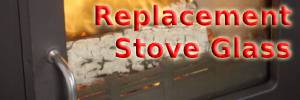The government has introduced a number of new accessibility improvements to the home testing programme to make it even easier to get tested.
Home test kits can now be ordered over the phone by calling 119, without needing access to the internet
NHS Test and Trace partnership with Royal National Institute of Blind People (RNIB) to improve home testing service for people with visual impairments
New video-call support service with specially trained NHS Test and Trace staff will assist people with vision impairments to test at home
People who do not have access to the internet can now order PCR home testing kits over the phone by calling 119, without needing an email address or any other digital requirement.
This means that people without access to the internet or digital services can order PCR tests to use in their homes, if they have symptoms. The home testing service is available to everyone in the United Kingdom with COVID-19 symptoms, and can still be accessed through the home testing online portal.
In order to improve accessibility of testing services, NHS Test and Trace has worked with and sought feedback from a number of charities, including the RNIB, Macular Society, Thomas Pocklington Trust and Visionary.
NHS Test and Trace has worked particularly closely with the RNIB, undertaking trials with volunteers with differing levels of vision quality to understand the changes that would have the most impact. Following recommendations, new tools are being introduced for those ordering home test kits who are vision impaired, including:
improved boxes that are easier to assemble for the returning of tests
instructions in braille, audio (CD) and large print
an RNIB information line you can call to hear a recorded version of the instructions
Additionally, the government is planning the spring launch of ‘Be My Eyes’ specialist video support, an app that customers can download that will offer customers with vision impairments live video assistance where an assistant will ‘act as their eyes’. The assistants are specially trained NHS Test and Trace staff.
NHS Test and Trace’s network of more than 850 test sites also has access to language translation services. Home test kit easy read instructions are translated into Hindi, Bengali, Polish, Indian Punjabi, Pakistani Punjabi, Slovak, Somali, Urdu, Gujarati, Arabic, Mandarin and Chinese, and are being made available in both hard copy and online.
Interim Executive Chair of the National Institute for Health Protection Baroness Dido Harding said:
With more than 6 million PCR home tests conducted, home testing has not just improved convenience for many people who would have struggled to get to a test site, it has made testing more accessible for those who are shielding, self-isolating or awaiting elective hospital surgery.
We’ve made further improvements to accessibility, including the introduction of practical new tools for the vision-impaired, and a non-digital user journey for the digitally excluded, where people can call 119 to order a test kit, register test samples and receive results.
Health Minister Lord Bethell said:
We’re working with partners, like the Royal National Institute of Blind People, to better understand the end-to-end experience of users to break down any and all barriers to testing in our communities.
I encourage everyone with symptoms to get tested at one of more than 850 test sites we’ve set up. Those who cannot make it to a test site can order a home testing kit online or, now, by calling 119.
Sarah Lambert, Head of Social Change at RNIB, said:
RNIB began campaigning for a more accessible test in April last year, and were pleased to be invited to work with the Department of Health and Social Care (DHSC), trialling measures to improve it from May.
As a result of this work, it’s good to see the launch of instructions for the kit in a range of formats including braille, audio and large print and new less-fiddly packaging. It is also welcome that people without an email address can now access a test. We look forward to further changes in the coming months too.
We’re keen to work with the government to make sure future projects build in accessibility from the start.
Alexander Hauerslev Jensen, CCO, Be My Eyes said:
Be My Eyes video support provides the best possible experience for getting issues resolved efficiently – for any product or service – and we can’t think of a better application for this platform than using it to make COVID home tests more accessible to people who are blind or partially sighted.
Since the start of the pandemic, the UK’s rapid work has seen us build the biggest testing system, conducting more tests in total than any other major European country.
Hundreds of thousands of tests are processed every day, and more than 8.6 million people, including those testing positive and their close contacts, have been asked to self-isolate thanks to the work of NHS Test and Trace. Nearly everyone can access a test locally, as more than 850 test sites are in operation and the median distance travelled for a test is just 1.9 miles.
NHS Test and Trace has also continued to deliver some of its best turnaround times for home test kit results since the service launched last May, with a median turnaround time of 35 hours. We received more than 260,000 home test kits during this reporting week, with the service ensuring that those who are required to take a COVID-19 test are able to access one without visiting a test centre and meeting demand despite the current weather conditions.
Case studies
Edward Bates, 30, from Winterton was a participant in one of the RNIB and DHSC trials for blind and partially sighted people and said:
It was really great to be part of the trial to improve the accessibility of the home test. I found the digital version of the instructions really helpful as I was able to read them using my screen reader software.
I am really pleased these improvements are being made so blind and partially sighted people are able to get access to a test whenever they need one.
Berni Warren, who has diabetic macular oedema (DMO) had previously ordered a home COVID-19 PCR test with the help of her husband. Berni has used the new Be My Eyes service to order and use a home test and said:
I did it with my husband and I did it completely wrong. I also needed a lot of help from him. This trial was an opportunity to do it myself, so I used Be My Eyes because then I knew I could do it independently and I wanted to do it independently. I didn’t want to rely on any other help from my family, and they are all at work anyway.
So, I phoned Be My Eyes to give me a hand and it was brilliant – really, really good. It gave me the confidence to do it properly and safely. The test is a bit fiddly, but to have someone to talk you through it really helped, because then I knew I was doing it right. I wouldn’t have had the confidence to know I was doing it the right way otherwise and I would have worried sending it off.
What I was really worried about was the swab, because I couldn’t see it at all. I couldn’t see which end I had to hold and that was the most useful bit of the test. The person from Be My Eyes was so patient and explained things so well. I didn’t feel rushed and I found it so useful and would definitely recommend it.
NHS Test and Trace and Be My Eyes partnered to improve the accessibility of COVID at-home testing. Paralympic gold medalist in cycling, Lora Fachie, MBE was a member of the test group for the programme and said:
The lady who I connected with was fantastic at just directing me.
She just took charge and provided clear instructions and put me at ease as I was feeling a bit apprehensive about the whole thing.
For those with sight loss, it can be challenging to understand and follow the procedure for self-testing without some help. Those who are blind or experiencing sight loss across the United Kingdom can soon call the NHS for visual assistance with taking the at-home COVID test directly from the Be My Eyes app.
|
|
||||||
|
WANTED: YOUR NEWS AND STORIES FOR SOUTHPORT
Email local news to us including image(s) southport@qlocal.co.uk Follow / Report to us on Twitter @SouthportQlocal Follow / Comment with us on Facebook qlocalsouthport
WANTED: YOUR NEWS AND STORIES FOR SOUTHPORT
Email local news to us including image(s) southport@qlocal.co.uk Follow / Report to us on Twitter @SouthportQlocal Follow / Comment with us on Facebook qlocalsouthport Check Todays Deals on Ebay.co.uk Your Comments:

Custom Search

|
You are in:
UK /
Southport / North West
Find any Town in the UK, or Use UK map Local Google MAP for Southport Check Todays Deals On Amazon.co.uk Check Todays Deals on Ebay.co.uk 
 Also website at southportnews.co.uk
Also website at southportnews.co.uk

Qlocal Supports Woodlands Animal Sanctuary 

 Be Seen - Advertise on Qlocal Corporate Sponsors
Southport Piano and Music Academy Washroom Services Maximum Grounds Maintenance Southport Garden Services Ormskirk Garden Services Sanitary Bins Nappy Bins & Waste Disposal Confidential Shredding Services Legionella Risk Testing London Washroom Services Croydon Washroom Services Hounslow Washroom Services Wandsworth Washroom Services Havering Washroom Services Sanitary Bins London Clinical Waste London General Waste London Legionella Testing London Shredding London Tatoo Waste London Preston Bird Control Blackpool Bird Control
UK, Local Online News Community, Forums, Chats, For Sale, Classified, Offers, Vouchers, Events, Motors Sale, Property For Sale Rent, Jobs, Hotels, Taxi, Restaurants, Pubs, Clubs, Pictures, Sports, Charities, Lost Found
southport,
southport News,
|
|||||
|
|
|
|





 Reply With Quote
Reply With Quote


